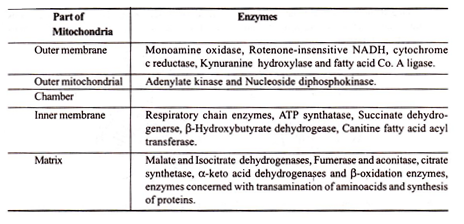Here is a term paper on ‘AIDS’. Find paragraphs, long and short term papers on ‘AIDS’ especially written for school and college students.
Term Paper on AIDS
Term Paper Contents:
- Term Paper on the Introduction to AIDS
- Term Paper on the Mode of Transmission of AIDS
- Term Paper on the Symptoms of AIDS
- Term Paper on the Diagnosis of AIDS
- Term Paper on the Control of AIDS
Term Paper # 1. Introduction to AIDS:
AIDS or Acquired Immune Deficiency Syndrome is a fatal disease caused by the retrovirus known as the Human Immunodeficiency Virus or HIV which breaks down the body’s immune system. This leaves the victim vulnerable to a number of life threatening infections, neurological disorders, etc. One special feature of the disease is that once an individual is infected, he/she is infected for life. This disease is also called the ‘slim disease’. It is a pandemic disease.
The HIV is a retrovirus, which can infect a normal host cell. The viral RNA is introduced into the cell which is converted to viral DNA by reverse transcriptase. The viral DNA incorporates into the host genome. New viral RNA is produced in the host cell which is translated into viral proteins. New viruses are produced which can infect other host cells (Fig. 2).
The retrovirus is 1/10,000th of a millimetre in diameter. The virus is covered by a protein capsule enclosing two short strands of RNA and enzymes. The virus replicates in the T4 helper cells in the body of the host. The virus can spread throughout the body and pass through the blood-brain barrier and can destroy the brain cells.
This is the reason for the abnormal neurological and psychomotor system seen in AIDS patients. HIV mutates rapidly and new strains are continually developing. The virus is easily killed by heat and readily inactivated by ether, acetone, ethanol, etc.
Once a person is infected, the virus remains in the body for life. The HIV infection takes years to manifest itself and the person may not show any kind of symptoms. But this infected individual can infect other people for years. The virus is found in great concentration in the blood, semen, and the CSF. Lower concentrations have been detected in the tears, saliva, breast milk, urine, cervical and vaginal secretions. It has also been found in the lymph nodes, bone marrow cells and skin.
Term Paper # 2. Mode of Transmission of AIDS:
The causative organism is transmitted from one individual to another in different ways:
i. Sexual Transmission:
AIDS is first and foremost a sexually transmitted disease.
ii. Blood Contact:
AIDS is transmitted during transfusion of contaminated blood to an individual.
iii. Sharing of Needles amongst Drug Users:
AIDS can be transmitted by sharing needles and syringes amongst drug users. Any skin piercing such as ear piercing, tattooing, acupuncture can also transmit the disease.
iv. Maternal-Foetal Transmission:
HIV may pass form an infected mother to her foetus through the placenta or to the infant during delivery or by breast feeding.
There is no evidence that HIV is transmitted through mosquitoes or any other insect, social contact or through food or water. The incubation period of the HIV may range from a few months to six years or even more. The virus can lie silent in the human body for many years.
Term Paper # 3. Symptoms of AIDS:
In some individuals, mild illness such as fever, sore throat and rash may appear after initial infection with the virus. In majority of cases, no symptoms are seen initially. HIV antibodies usually take between 2 and 12 weeks to appear in the blood stream. But these antibodies do not inactivate the virus as in other viral infections.
As the immune system breaks down, the individual experiences one or more of the following symptoms – unexplained diarrhoea lasting for more than a month, fatigue, loss of weight, fever, night sweats, enlarged spleen, etc. The individuals who have two or more of these symptoms and who have a decreased number of T helper cells are considered to have AIDS related complex (ARC). Some patients with ARC subsequently develop AIDS.
AIDS is the terminal stage of HIV infection. A number of infections occur at this stage. Death will result due to uncontrolled or untreatable infection. Many people with AIDS are affected by a wasting syndrome known as the ‘slim disease’, which involves chronic diarrhoea and weight loss. Another condition seen is the AIDS dementia, which is caused by the HIV crossing the ‘blood-brain barrier’.
Term Paper # 4. Diagnosis of AIDS:
According to WHO, an adult or adolescent is considered to have AIDS, if at least two of the major signs are present in combination with at least one of the minor signs listed below in Table 4.
As antibodies to HIV are far easier to detect than the virus itself, their presence or absence in the blood stream is the basis for the most widely used test of HIV infection. A person whose blood contains HIV antibodies is said to be HIV positive or seropositive. A wide range of screening tests based on the detection of HIV antibodies is available.
The first kind of test is the ELISA (Enzyme Linked Immuno Sorbent Assay) test which is conducted to detect the presence of antibodies. The confirmatory test is the Western blot which is a highly sensitive test.
Term Paper # 5. Control of AIDS:
There are four basic approaches to the control of AIDS.
i. Prevention:
Until a vaccine or cure for AIDS is found, the only means at present available is health education to enable people to make life saving choices. One should avoid indiscriminate sex, sharing razors and tooth brushes. Drug users should be educated about the risk of sharing needles and syringes. Women suffering from AIDS should avoid becoming pregnant.
Media should be involved in educating the people on AIDS, its nature, transmission and prevention. People in high risk groups should refrain from donating blood, body organs, sperm and other tissues. All blood should be screened for HIV before transfusion.
ii. Antiretroviral Treatment:
Antiviral chemotherapy has proved to be useful in prolonging the life of severely ill patients. These chemicals help in suppressing the HIV replication rather than the complications caused by the virus. Different classes of chemicals are available. Combination therapy is the best method followed where drugs of different classes are combined to achieve suppression of the HIV.
iii. Specific Prophylaxis:
The different complications that arise as a result of HIV infection can be treated by administering specific drugs.
iv. Primary Health Care:
AIDS touches all aspects of primary healthcare which includes mother and child health, family planning and education. AIDS control programmes have to be integrated into the country’s primary healthcare system.

